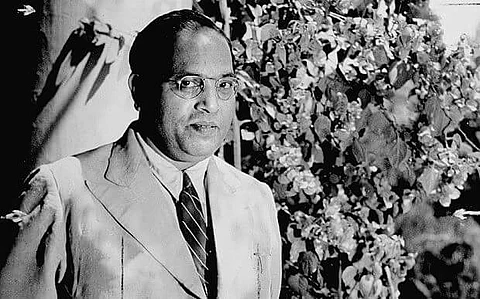

While Babasaheb B R Ambedkar is well-known as the man who drafted the Constitution of India and who led the country’s Scheduled Castes in their fight for dignity, less well-known are his views on land ownership, India’s village-based agrarian economy through the prism of caste and the importance of land in the emancipation of Dalit Indians.
In his paper titled, B R Ambedkar on Caste and Land Relations in India, academic Awanish Kumar, currently an Honorary Fellow at the School of Social and Political Science, University of Edinburgh and Assistant Professor at the School of Development, Azim Premji University, Bangalore presented “Ambedkar’s thoughts on land and agriculture and their relationship with class and caste in rural Indian society”.
Kumar notes that Ambedkar recognised that India was a largely agrarian country, where the main source of earning was land. However, Dalits were excluded from land ownership due to religious sanction.
Ambedkar commented on this issue in Untouchables or the Children of India’s Ghetto, writes Kumar:
Babasaheb, adds Kumar, also noted the government must provide land to Dalits to help in their social upliftment.
Land, according to Ambedkar, writes Kumar was not just about economics bit also about social status. A person who owned land, had more social status than one who did not. “Land ownership in the agrarian system in India was as much about dignity as it was about social and economic freedom,” according to Kumar.
Ambedkar was also emphatic about who was a farmer and who was not. Kumar quotes his speech during the third session of the Kolaba District Peasants’ Conference on December 16, 1934, where Ambedkar begins by pointing out that the term shetkari (Marathi for ‘farmer’) was a misnomer, since it included everyone from the landlord to the landless agricultural labourer.
According to Kumar, Ambedkar was emphatically opposed to the Zamindari system of landlordism. “He was sympathetic to the masses of the peasantry, even as he was aware of social differentiation within the class of peasants.”
Babsaheb differed with the mainstream view on land reform, according to Kumar. He was vehemently opposed to the idea of peasant proprietorship in agriculture and rather stood with the landless, most of them Dalits, who were often excluded from land reform discussions and debates.
Among the most radical ideas that Ambedkar floated regarding land reform in India was that Dalits be given separate villages, and that cultivable land be distributed to them.
Writes Kumar: “In demanding separate settlements for the Dalits, Ambedkar noted that while the Hindus lived in the village, the Dalits were forced to live in ghettos outside the village. Further, he argued that the village system of India was such that the Dalits, mostly landless labourers, were completely dependent on the Hindus for employment on land that the latter owned and controlled. Their wages were depressed for Hindus to profit and they had “no way of earning a living which is open to the Untouchables so long as they live in a Ghetto as a dependent part of the Hindu village” (Babasaheb Ambedkar Writings and Speeches, Vol. 1, p. 426)
Kumar chronicles that Ambedkar, in the second session of Ratnagiri District Bahishkrit Parishad (1931), suggested migration to “some better and distant lands” if Dalits wanted to get rid of the oppression in the villages. “He even suggested Sindh and Indore as destinations where he would try to secure cultivable land for the Dalits”. (Babasaheb Ambedkar Writings and Speeches, Vol. 17, Part 3, p. 128)
Babasaheb also suggested the nationalisation of land and collectivisation of agriculture under the auspices of the state. “Only such a policy, together with industrialisation and modernisation, he said, could break the ties of dependence and oppression between the people of the Scheduled Castes and caste Hindus,” according to Kumar.
“In Ambedkar’s worldview, the land question for Dalits is a component part of the struggle to annihilate caste, which, in turn, is essential to establish democracy in India,” he concludes.